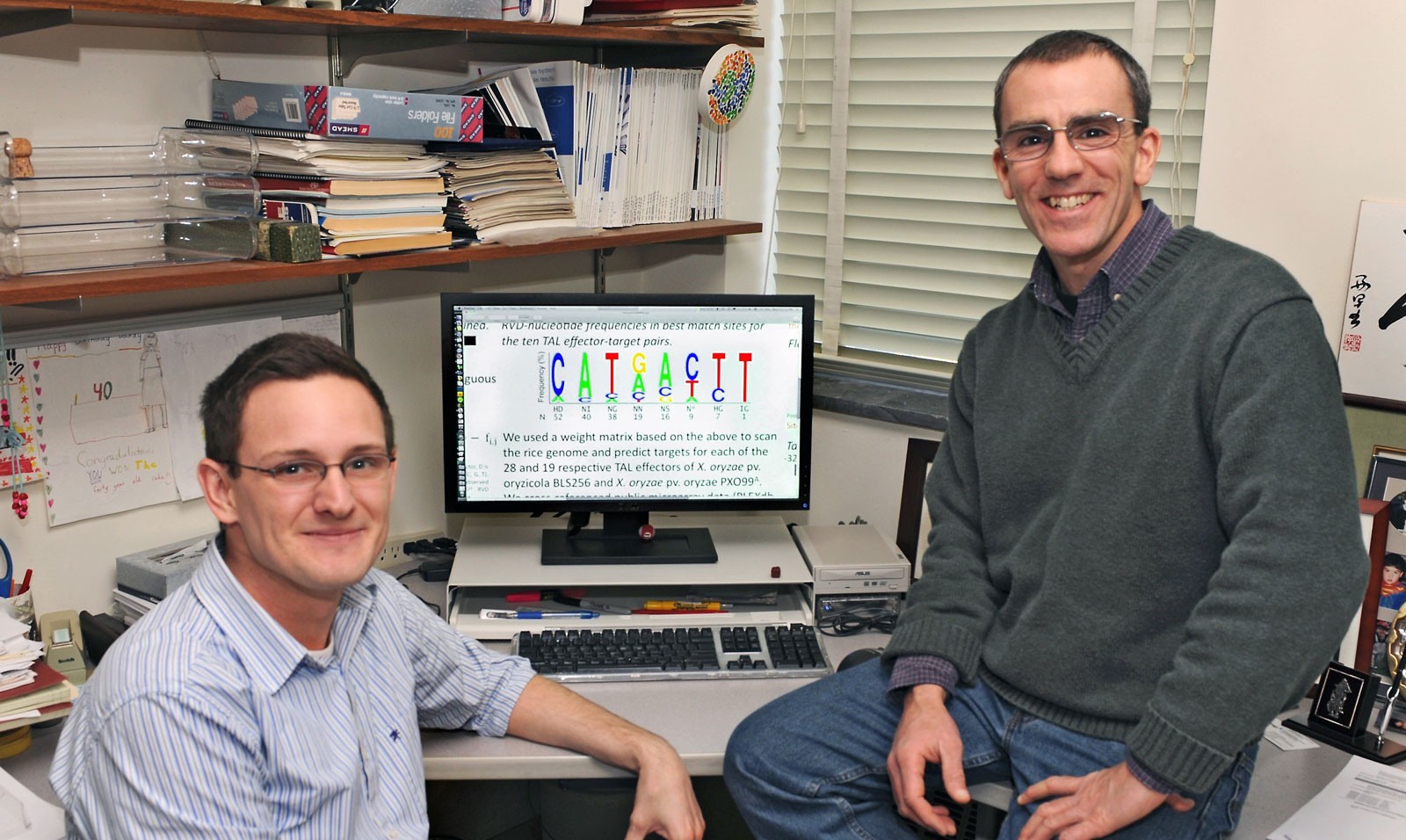
Simplicity Itself: A Key Discovery To Thwart Plant Diseases
“Wow, this is so simple, it’s ridiculous.”
When Adam Bogdanove discovered a key to DNA and protein interaction he was struck by its simplicity and its implications for opening up a “cascade of advances” from disease resistance in plants to human gene therapy.
Bogdanove, associate professor in plant pathology, was working with graduate student Matthew Moscou on the molecular basis of bacterial diseases of rice when they discovered how a group of proteins from plant pathogenic bacteria interact with DNA in the plant cell.
Through computer analyses they found so-called “TAL effector” proteins (injected into plant cells by the bacterium Xanthomonas) attach at specific locations to DNA molecules. Different proteins of this class bind to different DNA locations, and particular amino acids in each protein determine those locations, called binding sites, in a very straightforward way.
“This simple relationship allows us to predict where a TAL effector will bind, and what genes it will activate. It also makes it likely that we can custom engineer TAL effectors to bind to virtually any DNA sequence,” says Bogdanove.
According to Bogdanove, being able to predict TAL effector binding sites will lead quickly to the identification of plant genes that are important in disease. Natural variants that lack these binding sites are a potential source of disease resistance. Another potential application is adding TAL effector binding sites to defense-related genes so they are activated upon infection.
Having a bachelor’s in biology from Yale and a Ph.D. in Plant Pathology from Cornell, Bogdanove was most tuned into plant applications for this new technology. But he says its potential extends beyond plant disease control.
“We might be able to use TAL effectors to activate genes in non-plant cells, possibly even in human stem cells for gene therapy. Or we might be able to use them to modify DNA at specific locations and help us study gene function. This could apply in many areas, including cancer research, for example,” he says.
“A predictable and potentially customizable kind of protein-DNA binding has been hard to find in nature. As Matt and I talked about the possibilities, we got excited and one of us said – I don’t remember who – ‘We’ve got to submit this to Science, dude,'” says Bogdanove.
So they did.
Bogdanove’s research was published in the December issue of the journal Science and its early online edition Science Express. Their paper was published alongside a study from another research team that arrived at the same conclusions independently.
In addition to his research program, supported by the National Science Foundation and the United States Department of Agriculture, Bogdanove spends time in the classroom. He teaches an undergraduate course on the biology of microorganisms and two graduate courses – one on fundamental genetics and one discussing the molecular biology of plant and pathogen interactions.




